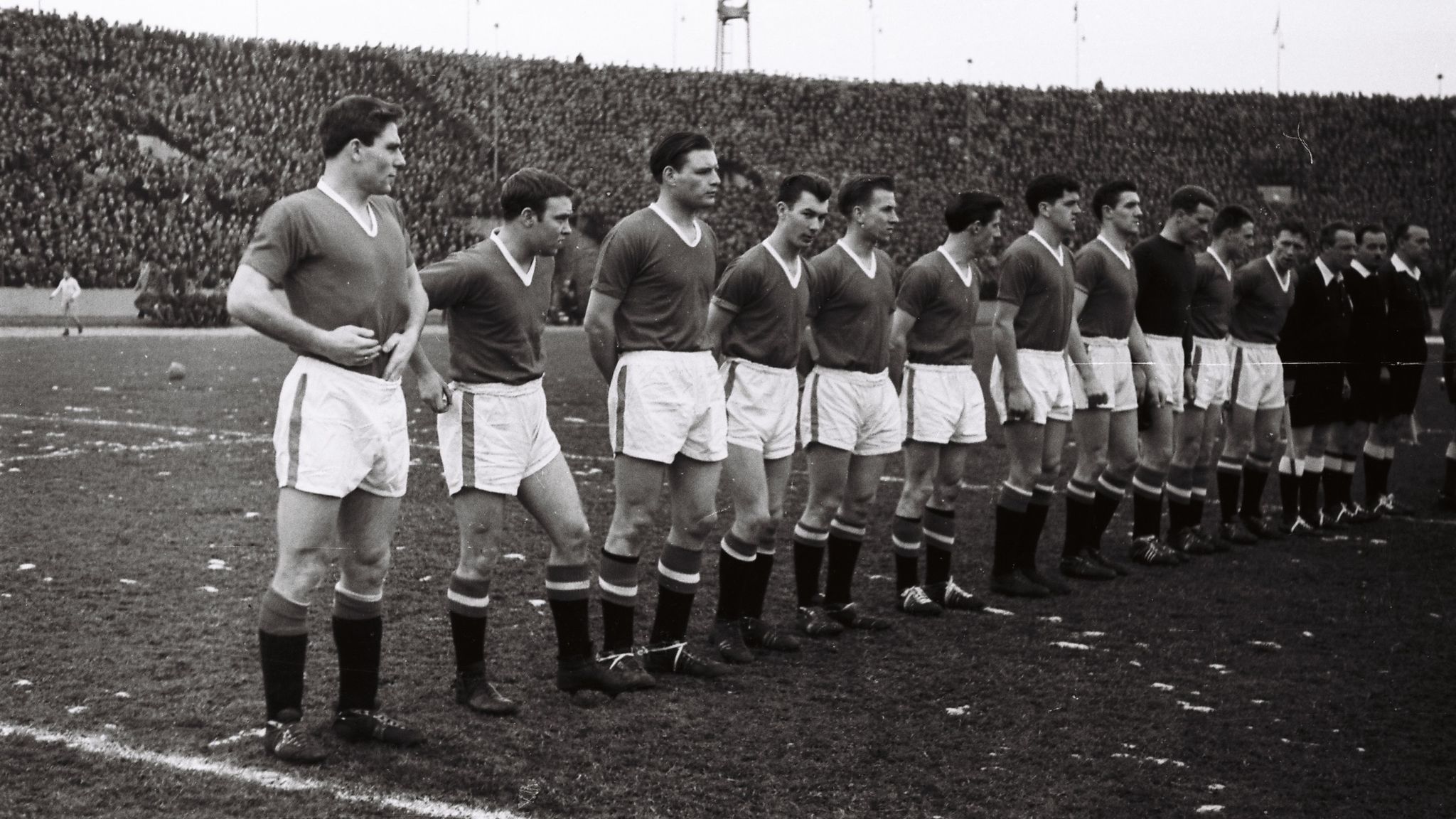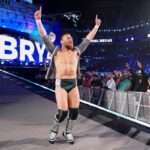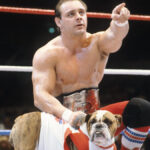Did you know why Manchester United are called the Red Devils? Keep reading to find out the true story behind the legend
If you go anywhere in the world, the name “The Red Devils” will be known by locals, and greeted by either joy or derision. Boasting one of the largest fanbase in the world, the name Manchester United is synonymous with football all over the globe.
The likes of David Beckham, Cristiano Ronaldo and Wayne Rooney command interest whenever their names are mentioned, and their image is known worldwide as Red Devil legends. But why are Manchester United called the Red Devils?
But what is a “Red Devil”? What brought Manchester United, a club steeped in history and local culture, to be associate with the Red Devils?? To find out, we have to go all the way back to Sir Matt Busby and the Busby Babes.
Why Are Manchester United Called The Red Devils?
To find out why Manchester United are called The Red Devils, we first need to look back at one of the clubs greatest ever manager – Sir Matt Busby.
Sir Matt Busby

The reason Manchester United are called the Red Devils is down to Sir Matt Busby.
Even over 50 years after winning the European cup, Sir Matt Busby is regarded as one of the greatest managers of all time. He is argued alongside Sir Alex Ferguson as Manchester United’s greatest ever manager.
The pair share a lot of parallels. Both Scottish, both footballers turned managers. They both had a focus on bring youth players through the team, and they both managed the club for over 20 years to astonishing success.
Busby, however, was a star for two of Manchester United’s biggest rivals in his playing days. A keen footballer since birth, he first worked down the mines with his father. But his father and three uncles all perished in the first world war. After this, he moved his aspirations toward becoming a footballer.
He started out playing for local side Denny Hibernian, and earned himself a contract with Manchester City when he was 18 years old. Busby spent 8 years with the Citizens, winning the FA Cup in 1934. He made 200 appearences for Manchester City but began to fall out of favour after the FA Cup victory. Manchester United enquired about signing the Scot in 1931, but were unable to afford the £150 that City demanded for his signature.
In 1936, he moved to Liverpool for £8000, a huge fee at the time. He played over 100 games for the reds, but didn’t win any trophies and left after 9 years with the club. He would have played more for the club, but his career was impacted, like so many others, by the second World War.
Move into management
In the Second World War, Busby had served in the armed forces. He was a football coach for the Armed Physical Training Corps. It helped to shape the way he thought his football team should be. Army spirit. Togetherness. A team that grew together, and understood each other intimately on the pitch. It was something seldom tried in football before. But Busby was a pioneer.
Busby was originally set to take the role of assistant coach at Liverpool. He agreed the deal in May 1944. The Scot was to take over when the war was over, but his time in the army changed his mind. He requested for the deal to be terminated. This was due to an offer to take over at Manchester United, which he accepted.
The Busby Babes
The term “Busby Babes” was used to refer to the youthful side employed by Manchester United in the 1950s. The term was joined by a journalist at the Manchester Evening News, named Frank Nicklin. The “Babes” consisted of young, usually local players. They were trained and moulded into the way that Busby wanted the team to play.
Before they were known as The Busby Babes, they were simply referred to as “United”. Before they rebranded themselves as Manchester United in 1902, they were called Newton Heath LYR FC. When they were Newton Heath, in their famous green and gold colours, they were nicknamed “The Heathens”. This was a play on the “Heath” in their names, and similar to the “devil” imagery of their future name.

Busby set out a clear plan to find youngsters to fit the Manchester United ethos. He set head scout Joe Armstrong around the area to find the most talented youngsters to sign for the club. He installed coach and Wales manager Jimmy Murphy as head coach, to train the players in his vision.
“No-one outside the club will ever know how important he was to our success”
Sir Matt Busby on Jimmy Murphy SOURCE
The Players
The Busby Babes included players who would become legends at Old Trafford. Sir Bobby Charlton was signed as a 15 year-old schoolboy in 1953, and handed his debut against Charlton 3 years later, ages 18. He went on to make 758 appearances for the Red Devils and helped England to a Wold Cup win in 1966.
The squad also contained legends like Bill Foulkes, Roger Byrne and Mark Jones. It also included players who’s careers were cut short by the Munich Air Disaster, none more so than England International Duncan Edwards.
Edwards played 18 times for England in a short career, spanning only 5 years. He was heralded as one of the best in the world by his opponents and peers, despite passing away at age 21. He was described as a big, strong player with incredible technical skills. Former Manchester United Manager Tommy Docherty said “there is no doubt in my mind that Duncan would have become the greatest player ever” and Bobby Charlton said that he was “The only player to make me feel inferior”.
First European Cup Campaign
Matt Busby’s Manchester United were established as one of Britain’s top teams in the 1950s. Despite Chelsea winning the league in 1956, Manchester United were the first team allowed in European Competition after winning the First Division title in 1957.
Chelsea were not allowed to enter the inaugural competition due to the Football Association’s belief that it was not in the best interests of English football to compete. They reversed that decision two years later, and allowed Manchester United to enter the tournament in the 1956/57 season. Sir Matt Busby.
United entered the European Cup in the 1957 season, and managed to reach the semi finals. In the first round they knocked out Belgium Champions Anderlecht, winning an astonishing 12-0 on aggregate. A 3-2 win over Borussia Dortmund followed, before Manchester United eked through 6-5 against Athletic Bilbo in the quarter finals.

Then, Manchester United faced the reigning, and eventual Champions, Real Madrid. They lost 3-1 in front of 120,000 fans at the Santiago Bernabeu, with Alfredo Di Stefano on the scoresheet. He will become more relevant later on.
United went back to Old Trafford and managed a famous 2-2 draw with Madrid, with Bobby Charlton and Tommy Taylor (one of the eight players who didn’t return from Munich) scoring for the Busby Babes. They were sadly knocked out by Los Blancos, but represented English football well in their maiden European campaign.
A wonderful write of that game can be read here
57/58 Season
In the 1958 Season, Busby and United were intent on avenging their loss to Madrid the year prior and tasting European cup victory. After a second consecutive league title win, they entered their second European Cup tournament.
Manchester United beat Shamrock Rovers 9-2 over two legs in the first round. They followed up it in the next round by defeating Dukla Prague 3-1 on aggregate, which included a 3-0 win at home in the first leg.
The next round, United faced off against the Yugoslavia Champions Red Star Belgrade. The European Cup matches had caused issues with the Football Association, who had warned Busby that any missed or rearranged matches would cause penalties from the FA.
In the last round against Dukla Prague, United were unable to fly from the Czech Republic for the match. A thick fog, not uncommon at the time, had covered Manchester. This mean United had to fly to Amsterdam and take a ferry and train back to Manchester. This caused many delays and took much longer for the team to return home.
This took a toll on the players, they fell to a 3-3 draw with Birmingham. When they drew Red Star Belgrade in the quarter finals, they knew that it was not an option and had to get back home as soon as possible.
Belgrade to Munich
Manchester United knocked Red Star Belgrade out of the European Cup, and were travelling back to the Manchester on 6 February 1958.
They were wary of taking a long, arduous journey like the previous round. United chartered a British Airways flight to take them from Belgrade. The team would fly from Belgrade to Munich for refuelling, then to Manchester from Munich.
The flight from Belgrade was uneventful, with players in good moods after advancing into the semi final of the tournament. They were drawn against European giants AC Milan. United had the chance to face Real Madrid in the final, to avenge last years defeat.
They landed in Munich to refuel, and the weather was very poor in Germany. The plane attempted to take off twice after refueling, but the takeoff would be abandoned due to issues with the plane meant that after two attempts. (You can read more about the issues with the plane and the crash in Stephen R. Morrin’s book)
The Munich Air Disaster
Snow began to pile up around the airport, and Duncan Ferguson even send a telegram home, saying “All flights cancelled, flying tomorrow. Duncan”. The flight was assumed to be delayed, but the players soon re-boarded the plane and take off was attempted.
Due to issues with the throttle, and the thick layer of ice on the runway, the plane struggled to take off, and slipped down the runway and into a nearby house, through a fence. The plane caught fire, and became engulfed in flames as the fuel caught fire and exploded.
Twenty passengers died in the immediate tragedy, with three dying later in hospital. Seven Manchester United players died at the scene, and an eighth, Duncan Edwards, died 15 days later in hospital, and 23 people overall died as consequence of the crash. One of the 23 men at the scene was former Manchester City goalkeeper Frank Swift, who was working as a correspondent on the match for the News of the World.
Post Munich
After the Munich air crash, Busby had to rebuild. He did not take charge of United immediately after the crash, however. Jimmy Murphy took charge of the team, having missed the crash because he was taking managing Wales.
Despite being offered the chance to miss their remaining fixtures, Murphy and Busby were determined to fulfill their remaining fixtures.
They beat Sheffield Wednesday 2 weeks later in the FA Cup. A much changed team made up of mostly youth prospects who didn’t travel, the following fixtures were difficult for United.
The former “Busby Babes” were chasing a third consecutive championship, but after the harrowing crash their form dipped. They dropped 21 points in the following 14 matches and finish the season ninth in the league. UEFA invited them to appear in the 1958-59 European cup due to Munich Air Disaster. It even had the approval of the previously euro-sceptic FA, but United declined.
Murphy led a makeshift United to the FA Cup Final that season, but could not pull off the fairy tale victory. They lost 2-0 to Bolton Wanderers, but beat AC Milan 2-0 at Old Trafford in the European Cup. Sadly, they travelled the Milan and lost 4-0, sending Milan to the final against Real Madrid. Madrid won the cup again, winning 3-2 after extra time.
Help from Home and Abroad
Other clubs were unselfish in their attempts to help United after Munich. Fierce rivals Liverpool offered United five players on loan to help them complete their fixtures for the season. It was turned down, but appreciated. Real Madrid offered to gift United their newly won the European cup, which was also declined.
They went one further, and tried to send their best player, Alfredo Di Stefano, to United on a short term deal. Madrid and Manchester United had agreed the deal for the following season. The worlds best player was all set to join the former English Champions. Manchester United, not yet the Red Devils, had a football icon joining their club.
However, the Football Association rejected the deal and the transfer was cancelled. The reason given by the FA was that it would “hamper the development of a British Player” which, while making sense, did seem ridiculous after 23 deaths in Germany.
The Red Devils Rise
After Munich, Busby had to rebuild. The youthful, hopeful Busby Babe team was no more. This new team was toughened by the horrors it had seen in Munich, and Bobby Charlton was the star of the team.
This new team didn’t fit with the name “Busby Babes”. The idealistic, young team was lost in Munich, and it was an innocence that could not be recovered after such harrowing times. A new name was to be forged, one which showed the toughness and perseverance, that showed a new way of Manchester United. Incorporating the youth was not abandoned by Busby, but the era of the Babes was gone.
The name chosen to represent Busby’s new team came from a local rugby club, funnily enough. In the 1930s, local Rugby club Salford had toured France in the 1930s, and they proved so dominant that they won all six of their matches against local sides. The French press subsequently gave them the nickname “Les Diables Rouges“, or “The Red Devils”. The name stuck and to the this day, the club are officially called “Salford Red Devils”.
Manchester United Became The Red Devils
Matt Busby saw the name of the club, and liked it. Thinking it provided a movement away from the angelic babes towards a more hardened, experienced and fearsome side, the club adopted the nickname unoffically.
The club soon began to take the nickname as official, and Busby announced it as so. Busby soon began having the name and imagery incorporated into merchandise, like scarfs and match programmes, and in the 1970s it was added as an official part of the club badge. Manchester United were now the Red Devils.
In 1968, Busby would eventually lead the club to the European Cup trophy, the trophy that 23 men had died trying to achieve. The Red Devils would be a nickname that would stand the test of time, and is still a large part of Manchester United identity to this day.









He is a big criminal